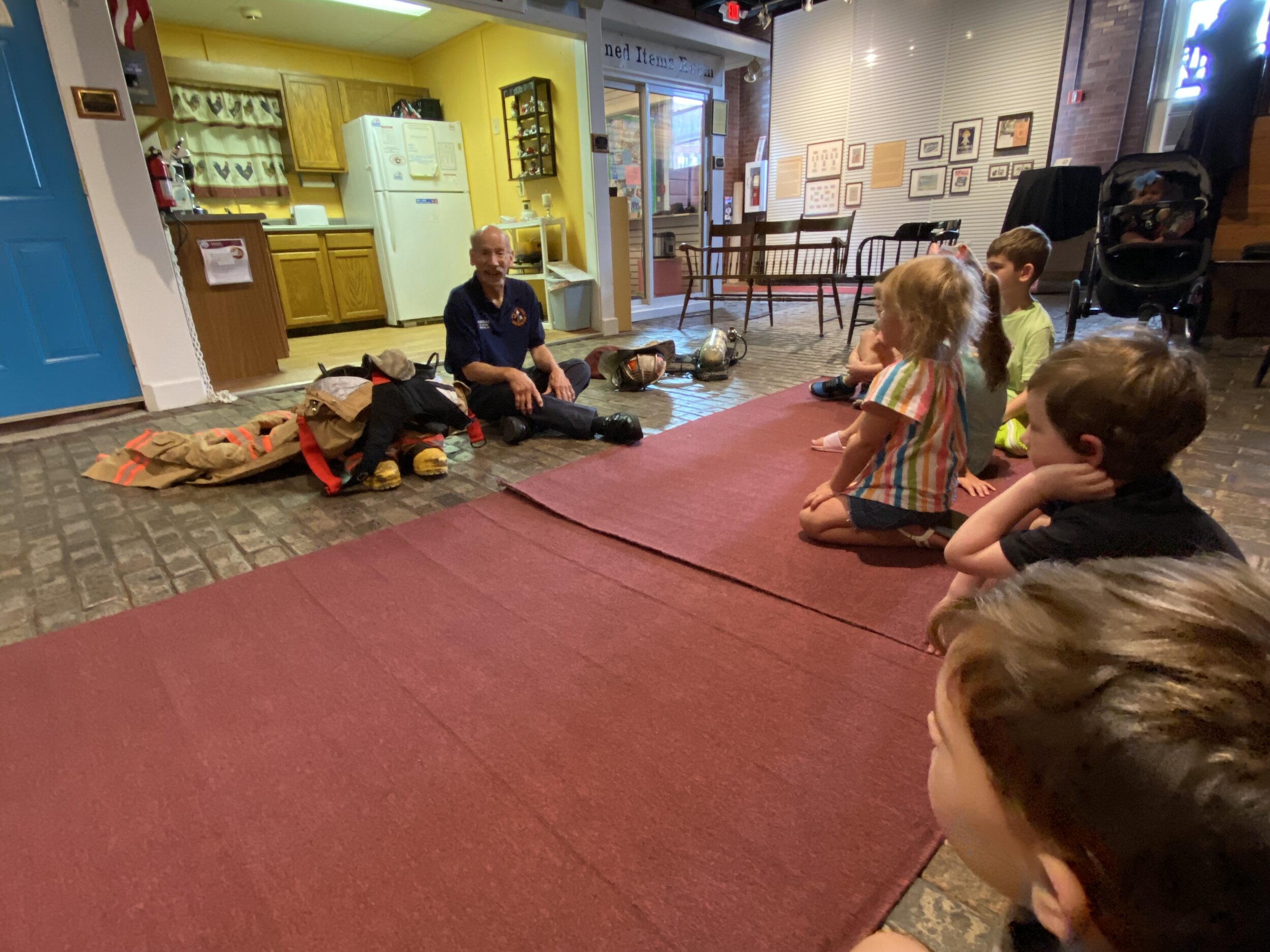
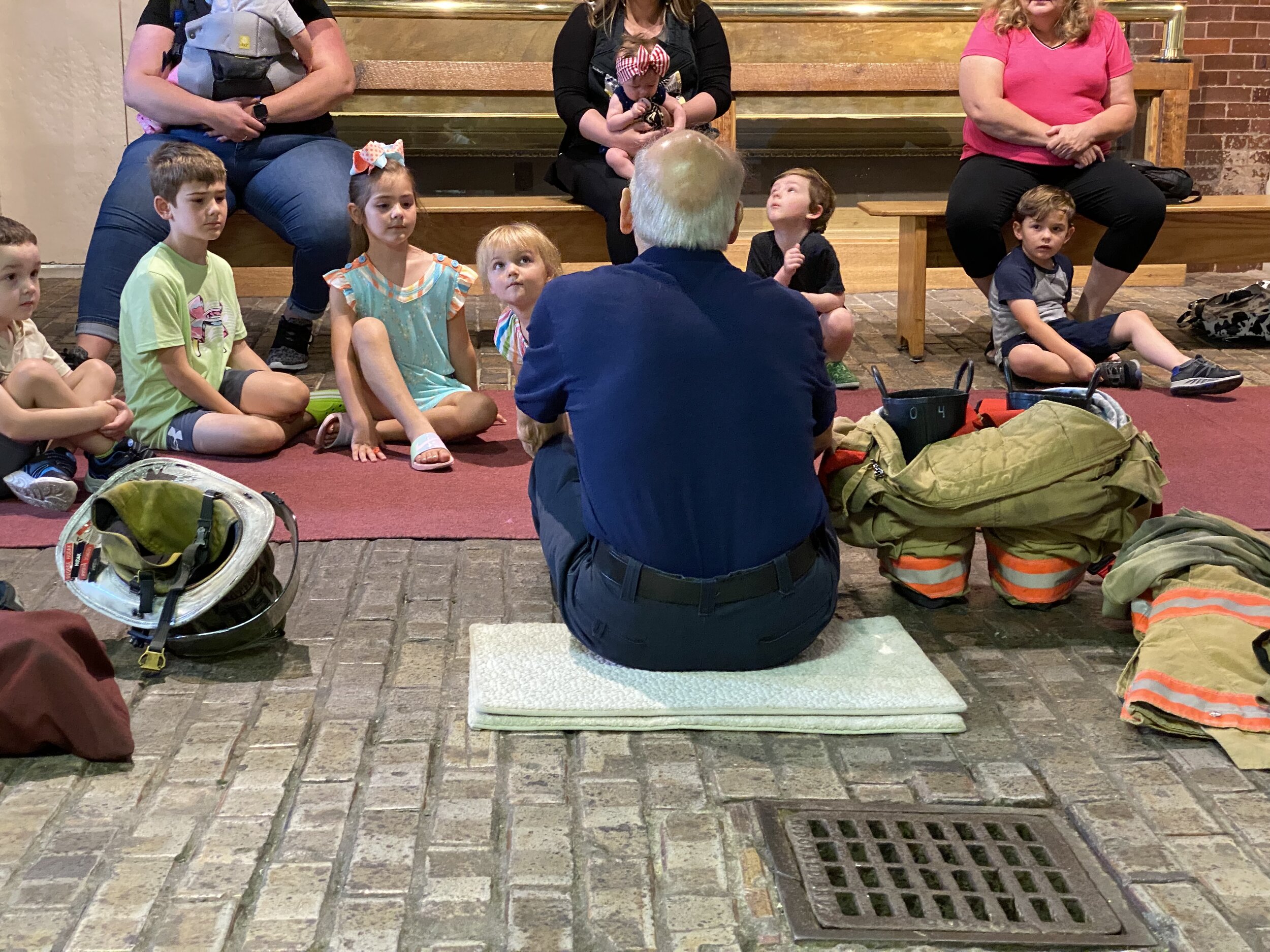
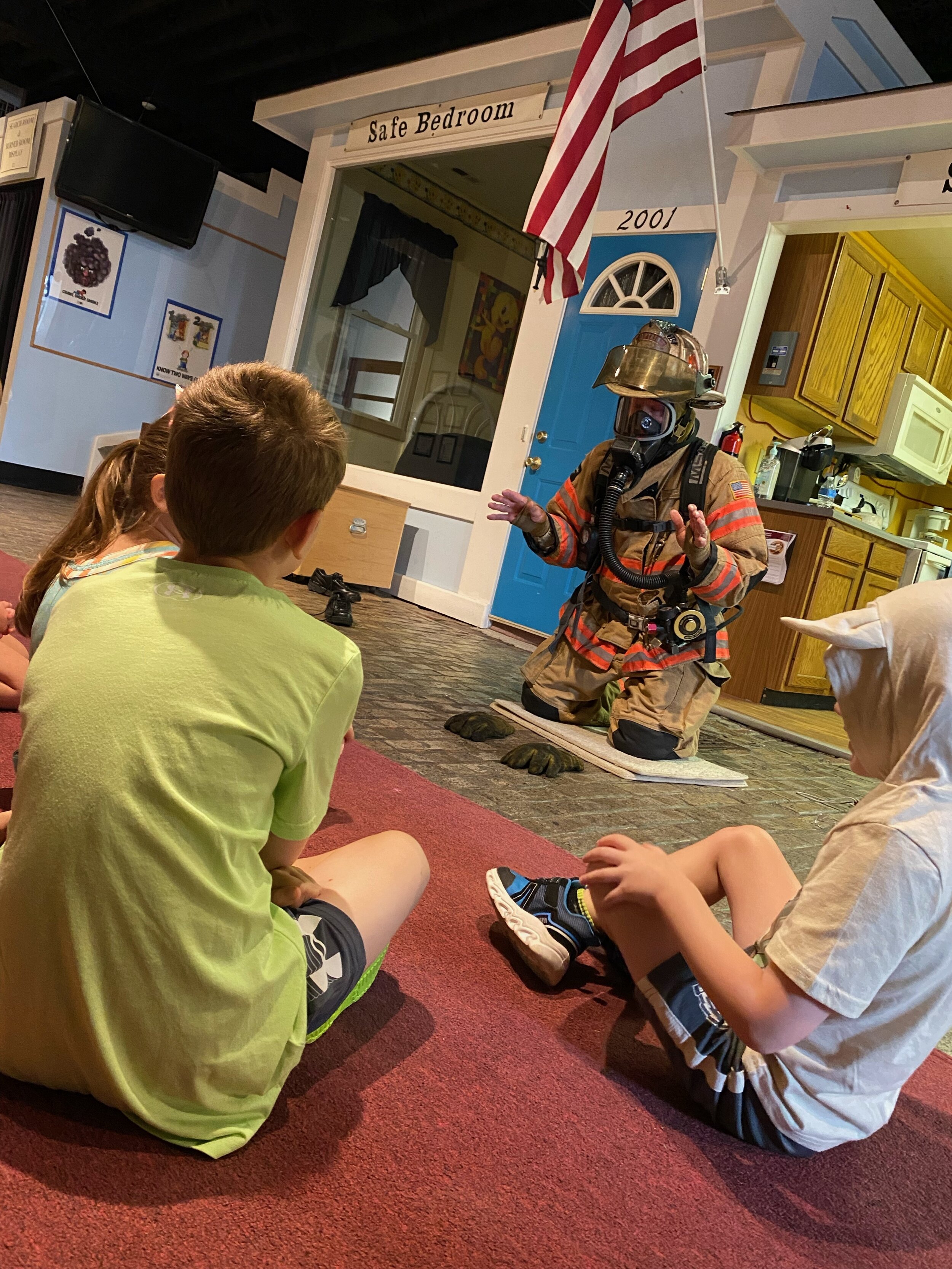
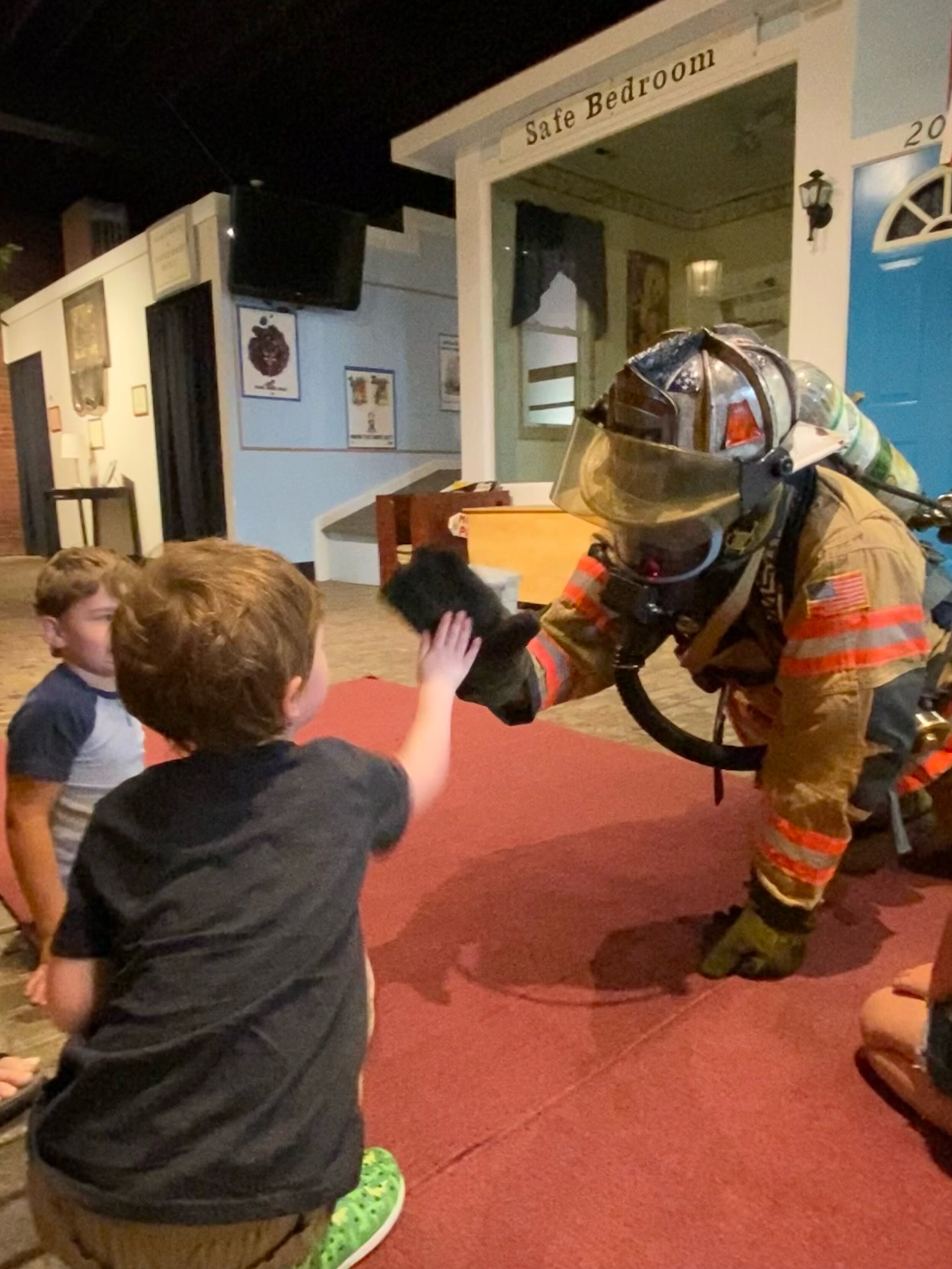
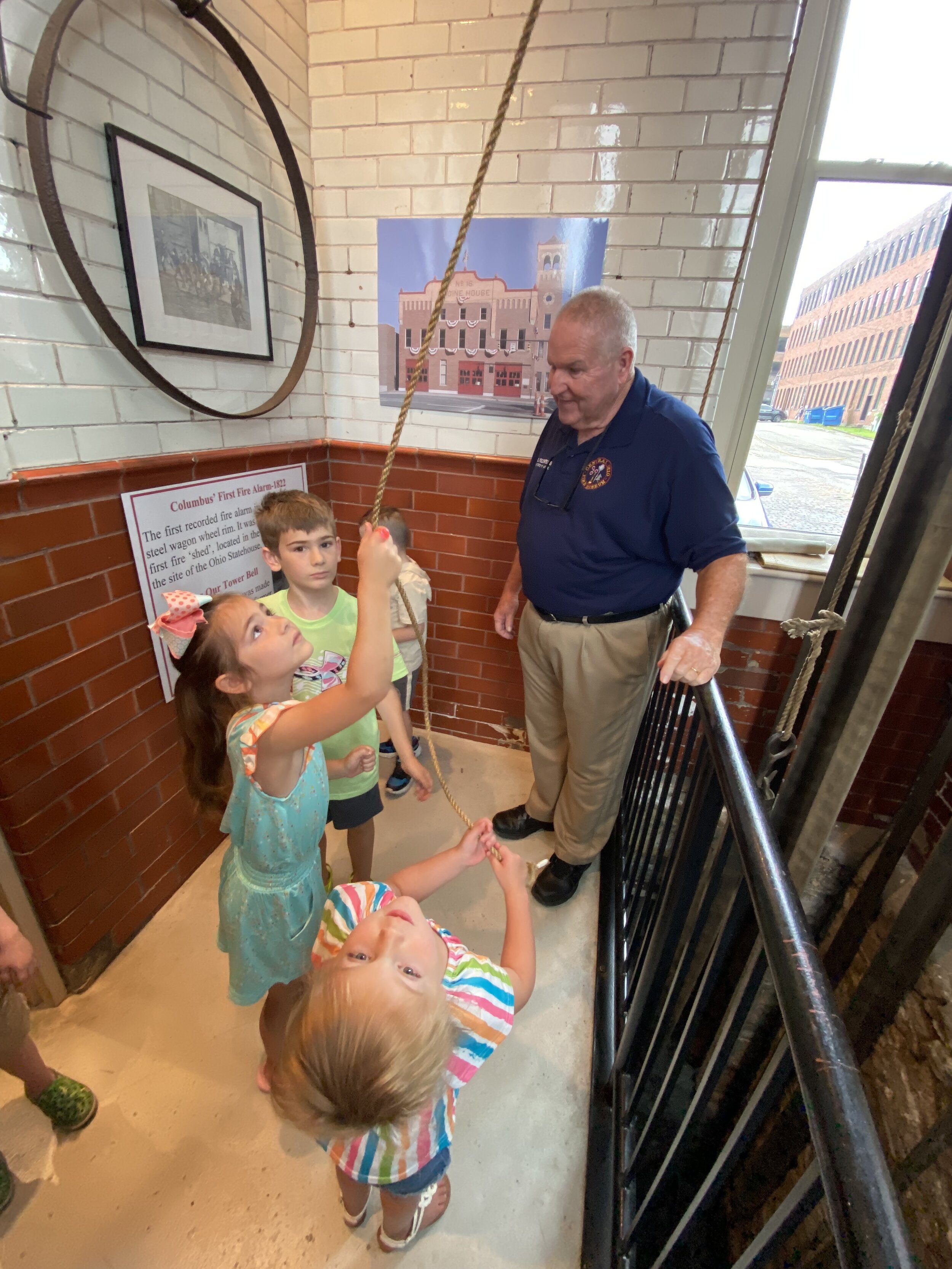
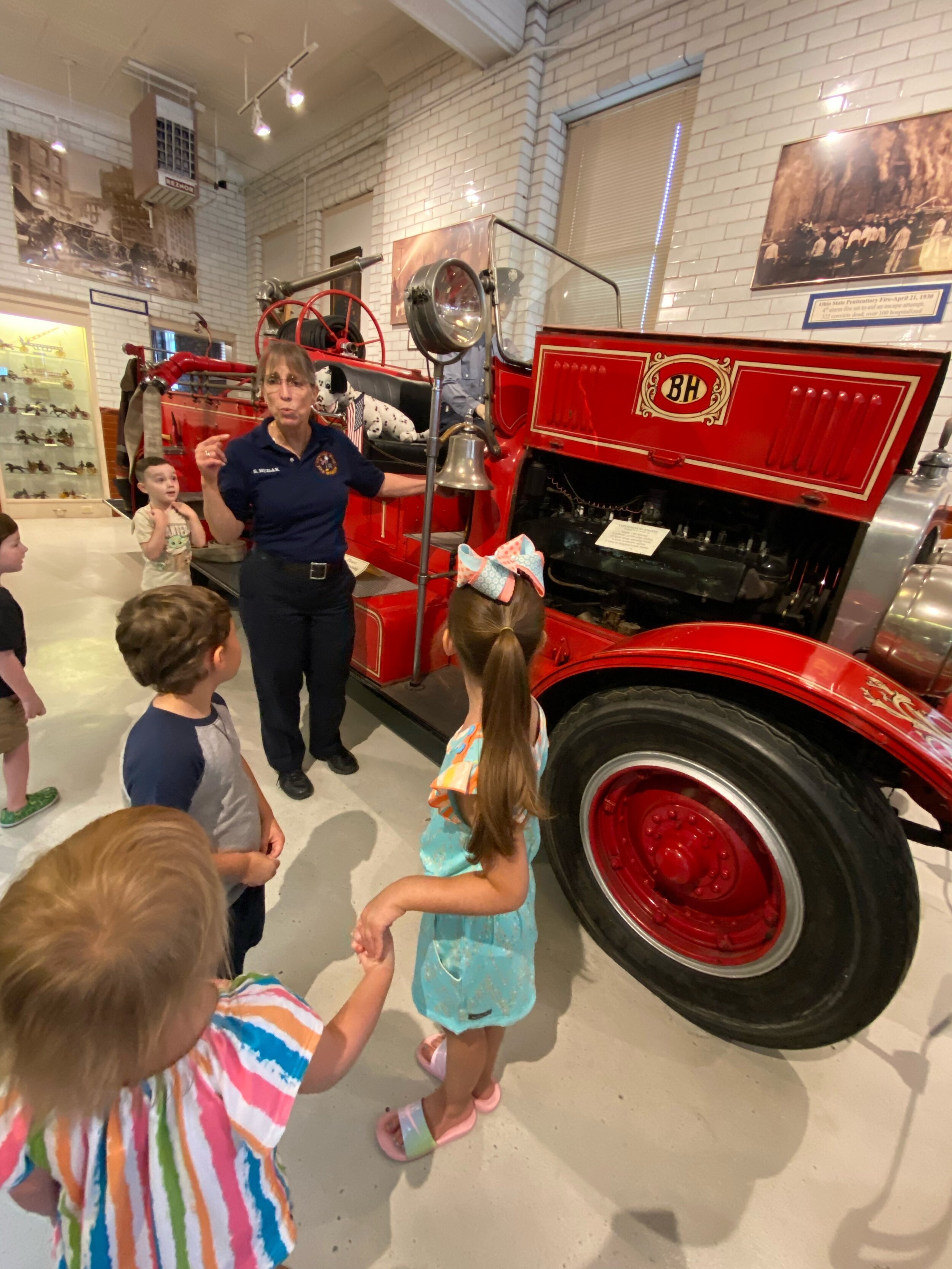

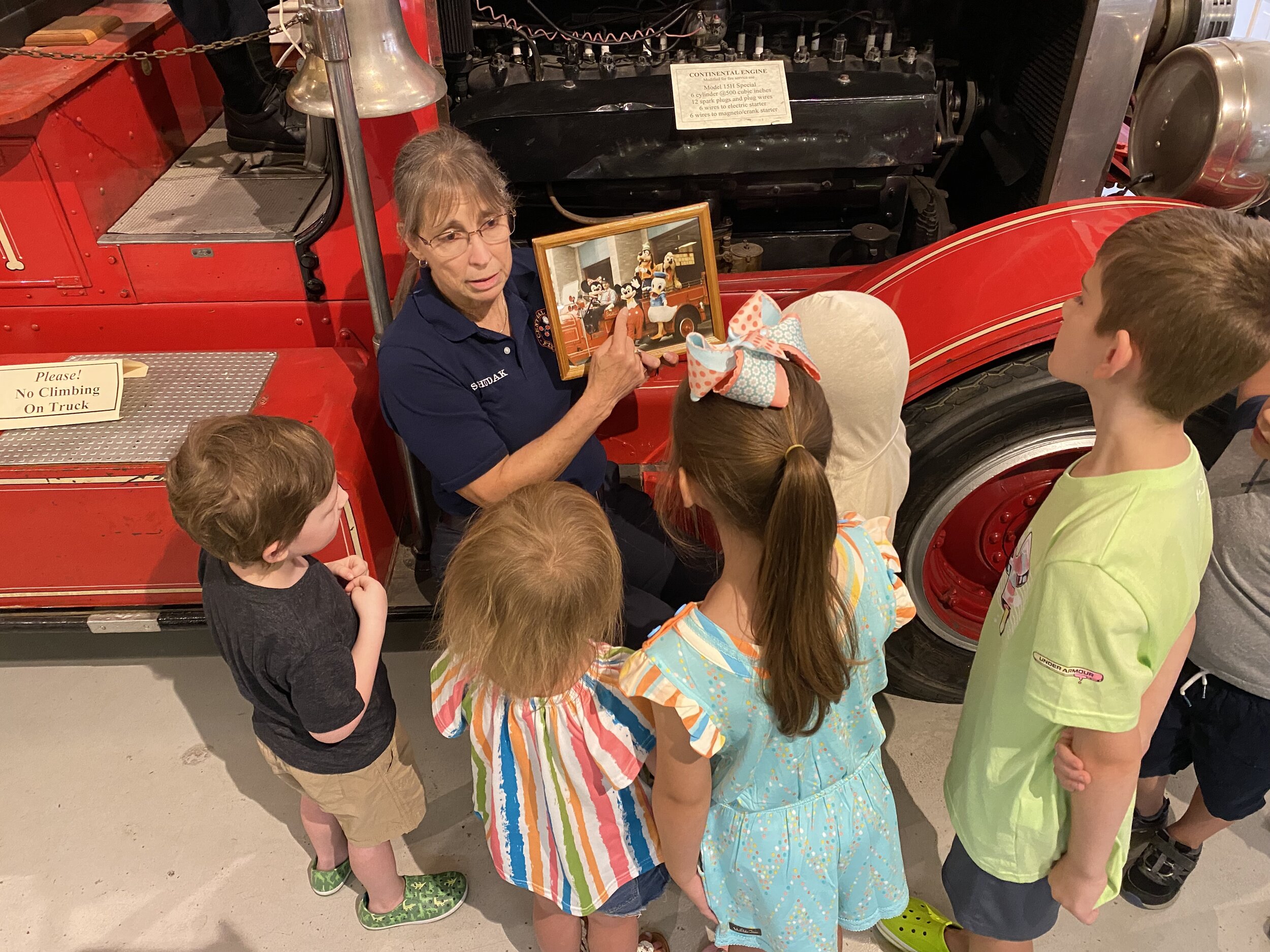
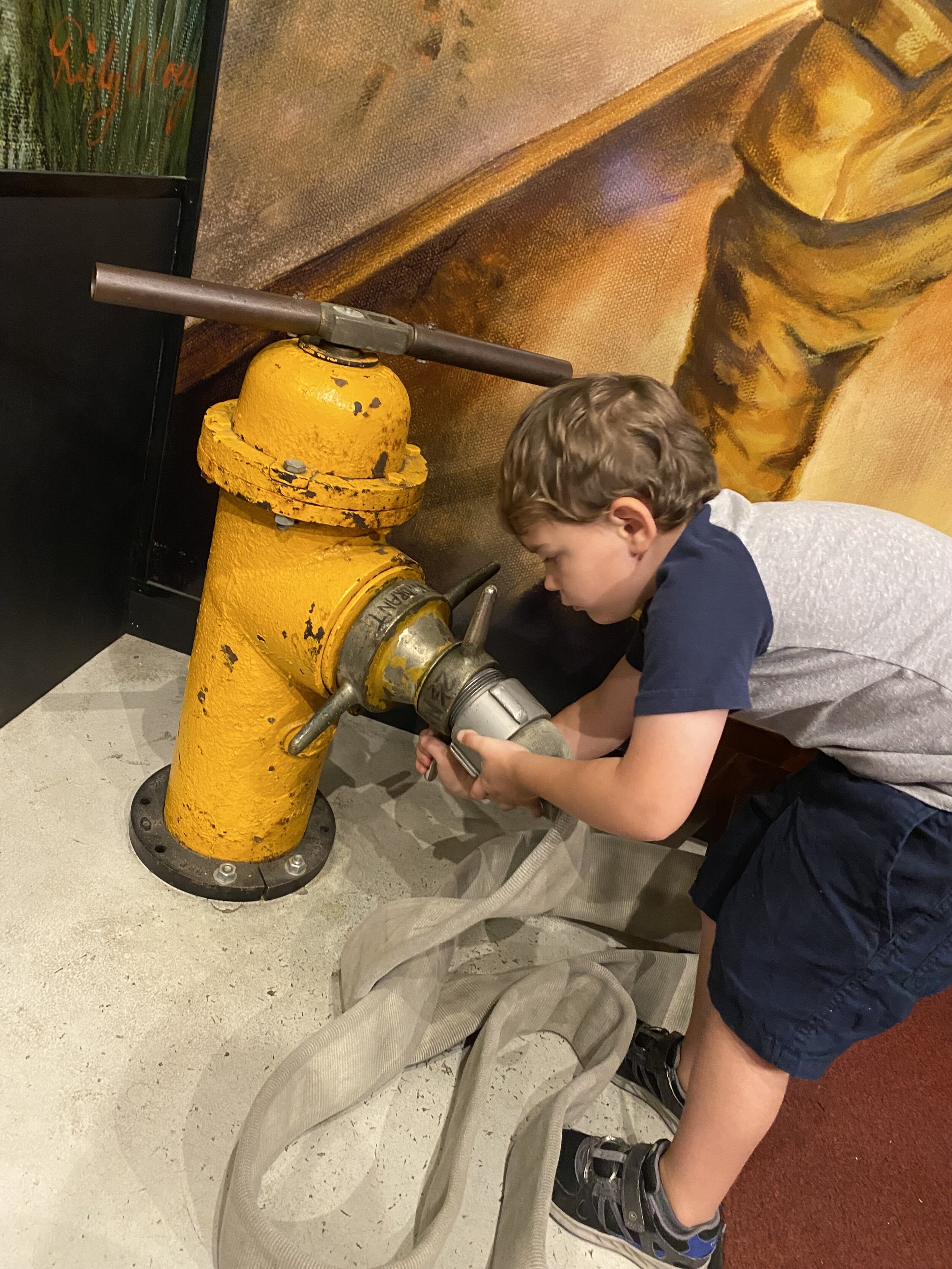



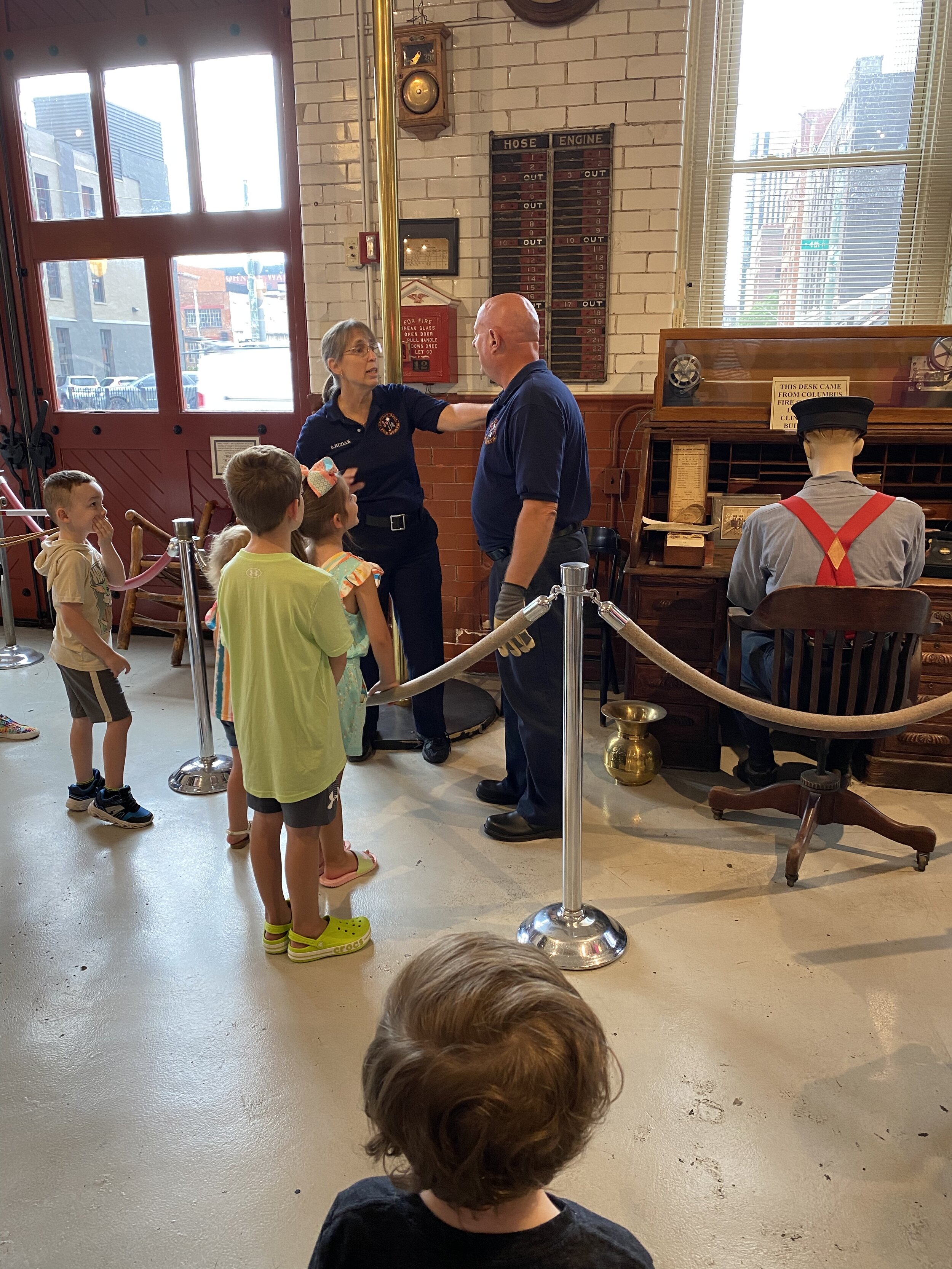
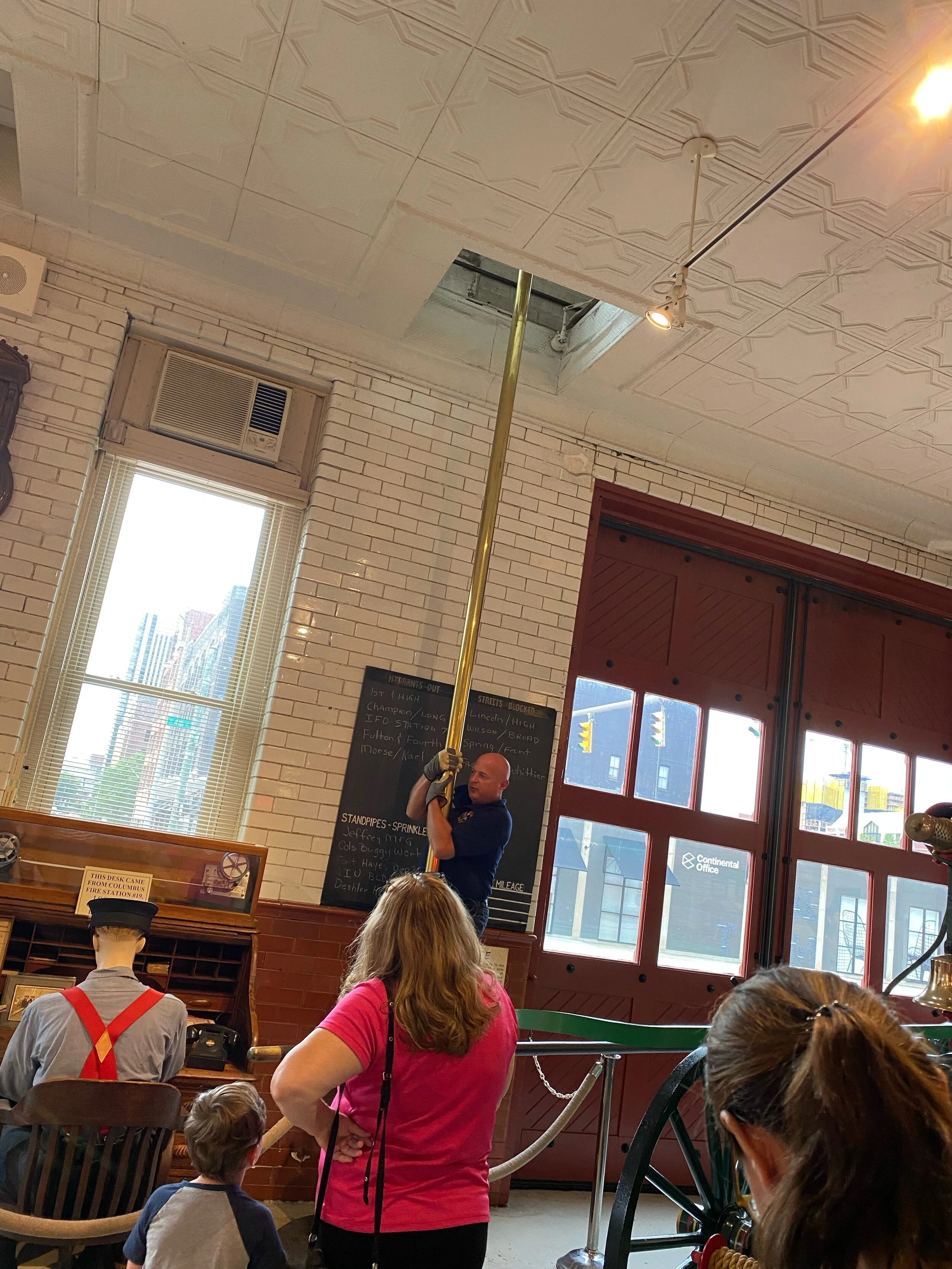

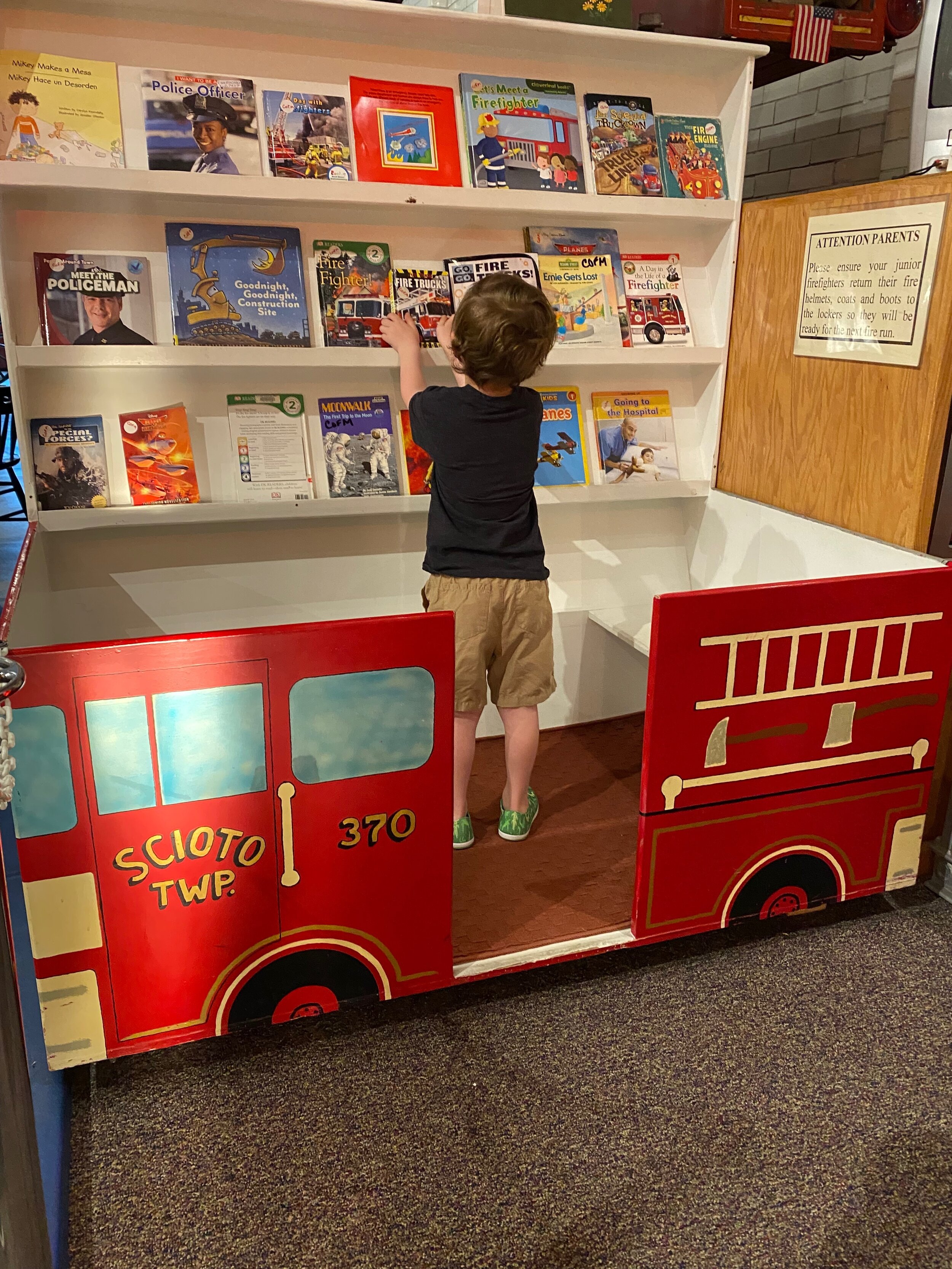

Education Programs
All of our programs follow the NFPA’s (National Fire Protection Association) guidelines for fire safety education.
Our fire safety education programs offer age-appropriate classes to all our guests and scheduled tour groups. The age range is Pre-K through Senior Citizens. Guests can learn how to make their homes fire-safe, visit our fire safety kitchen, and practice what to do if there is a fire in their home. We also teach the “Home Escape Plan” where guests can practice how to safely get out of a house fire. Guests are also given materials to take home and develop a plan for their own home, with their family. We have an average of 7,000 guests a year. Outreach programs are available to local Headstart programs and the Children’s Hunger Alliance.
Pre-school through 1st grade
Our museum offers fun, age-appropriate educational tours specially designed for young learners in preschool through first grade. These interactive visits help children learn about fire safety in a friendly and memorable way—through hands-on activities, storytelling, and exploration.
“Matches and Lighters Are Tools, Not Toys” Program
We begin the visit with a fun and interactive fire safety lesson designed just for young kids. Sitting together at their level, we use a special bin filled with objects—some toys, some tools—and ask the children to help us decide what’s meant for kids and what’s for grown-ups.
We teach kids that only adults should use fire, and if they ever see a bad fire, they should get help from a grown-up right away. The lesson ends with the reminder that matches and lighters are tools for adults—not toys for kids.
We also introduce the idea of Good Fires and Bad Fires in a way that’s easy to understand. Teaching that Good fires are the ones adults use safely—like when cooking food on a stove or lighting a candle at a birthday party. Bad fires are fires that aren’t supposed to be there—like a fire in a trash can or food in a toaster.
Kid-Friendly Museum Tour
After the safety lesson, we take the kids on a guided tour of our historic fire museum, specially tailored for young visitors. They’ll get to see real antique fire trucks up close, hear the sound of fire bells from the past, and even ring the 500 lb. bell in our bell tower. The visit ends with play time in our Future Firefighter Training Academy.
Older students (2nd Grade +)
Our Home Escape Plan program is one of the most important lessons we offer. It’s designed to help students think critically about fire safety at home and prepare them to respond calmly and effectively in case of a fire. Through hands-on learning, guided practice, and real-life examples, we empower students to become safety leaders in their families.
Interactive Fire Safety Bedroom
We begin in our immersive Fire Safety Bedroom, where students are presented with a simulated fire scenario. They must decide the safest way to exit the room based on what they’ve learned. This activity helps reinforce quick thinking and problem-solving in a realistic but safe environment.
Each student receives materials to take home, encouraging them to work with their families to create a customized home escape plan.
Key Steps to a Home Escape Plan
We walk students through the four essential steps:
Make sure you have smoke detectors throughout the home.
Know two ways out of every room.
Sleep with bedroom doors closed
Choose a family meeting place outside the home to make sure everyone is safe.
After discussing these steps, small groups practice them in our Fire Safety Bedroom, putting knowledge into action in a controlled setting.
Real-Life Fire Scenario
Next, we visit two realistic room exhibits, identical to our fire safety bedroom, but these rooms experienced an actual fire, and the family did not have an escape plan. One room features a firefighter searching for someone during a fire, while the second shows the aftermath of a devastating house fire. These powerful visuals help students understand the real consequences of being unprepared. W
Historic Fire Museum Tour
We end the program with a tour of our historic fire museum. Students explore vintage fire trucks, ring bells, and learn how firefighters used to live and respond to emergencies—complete with a firefighter sliding down the fire pole!
Adults and Senior Citizens
We begin in our fully interactive Fire Safety Kitchen, where we explore the leading causes of kitchen fires and discuss how to prevent them. Using real-life examples and practical demonstrations, we teach what not to do in the event of a kitchen fire, and more importantly, what the correct response should be to stay safe.
This session is designed to be relatable and easy to follow, with safety messages tailored to adults of all ability levels.
Home Escape Planning for Adults
This program reinforces the importance of planning ahead, especially for older adults who may have mobility concerns.
Participants are invited to take part in our Home Escape Plan program. where we discuss:
The importance of working smoke detectors throughout the home
How to identify two exits out of every room
Why it's best to sleep with your bedroom doors closed
Choosing a designated meeting place outside the home
Adults with Disabilities
For adults with disabilities, we provide a thoughtfully adapted version of the program. We never encourage individuals to fight a fire—instead, we emphasize getting out safely and calling 911. All instruction is delivered with care and respect for different needs and abilities.
Historic Fire Museum Tour
To complete the visit, guests enjoy a guided tour of our historic fire museum. Explore beautifully restored fire engines, ring vintage fire bells, and step back in time to see how firefighters lived and worked in decades past.
Create Your Home Fire Escape Plan
This video, recorded inside the Fire Museum, covers the four essential steps to help you teach your family, classroom, and community. Watch and learn how to create your Home Fire Escape Plan.
Need more practice? Visit the Fire Museum, where our amazing staff and volunteers are ready to guide you so you can confidently say, “Now I’m ready!”

